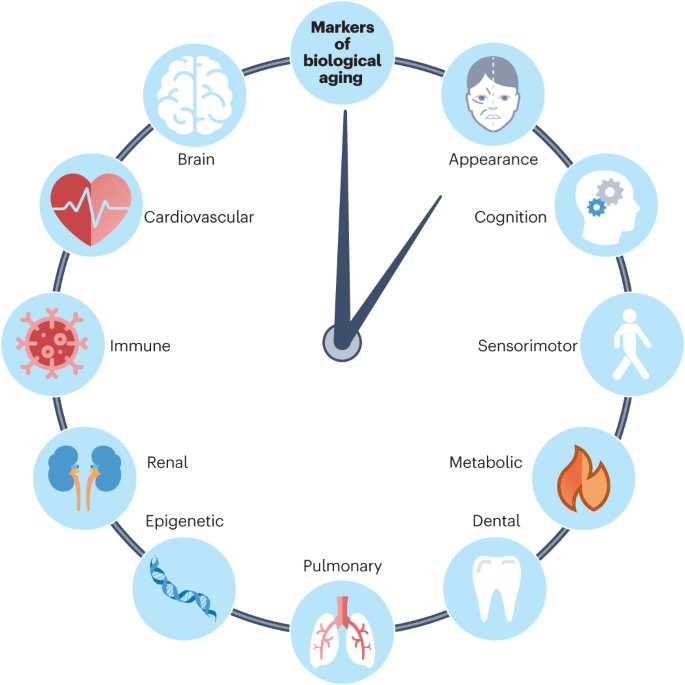magical healthy habits? Nothing you haven’t heard before: Exercise, eat a healthy diet, reduce stress, sleep well and foster positive social relationships. On the flip side, don’t smoke, don’t drink too much and don’t become addicted to opioids, club drugs or snake oil.
Want To Slow Down Aging? Focus On These 11 Longevity Biomarkers : There is much we can do to boost each one of the anti-aging pathways and slow the aging ones. Caloric restriction, as well as diet and lifestyle improvements, including physical activity, smoking cessation, and shopping the produce aisle, may all slow the epigenetic clock, for example. Recalibrate your soul to serve your health and those you love. It will change the world and reality itself. You can do this.
AMPK AMP-activated protein kinase (AMPK) is a phylogenetically conserved fuel-sensing enzyme that is present in all mammalian cells. During exercise, it is activated in skeletal muscle in humans, and at least in rodents, also in adipose tissue, liver and perhaps other organs by events that increase the AMP/ATP ratio.
Autophagy Autophagy is the natural, conserved degradation of the cell that removes unnecessary or dysfunctional components through a lysosome-dependent regulated mechanism. It allows the orderly degradation and recycling of cellular components.
Cellular senescence Cellular senescence is a phenomenon characterized by the cessation of cell division. In their experiments during the early 1960s, Leonard Hayflick and Paul Moorhead found that normal human fetal fibroblasts in culture reach a maximum of approximately 50 cell population doublings before becoming senescent.
Epigenetics Epigenetics is the study of how your behaviors and environment can cause changes that affect the way your genes work. Unlike genetic changes, epigenetic changes are reversible and do not change your DNA sequence, but they can change how your body reads a DNA sequence.
Glycation Glycation is the covalent attachment of a sugar to a protein, lipid or nucleic acid molecule. Typical sugars that participate in glycation are glucose, fructose, and their derivatives
IGF-1 Insulin-like growth factor 1 (IGF-1), also called somatomedin C, is a hormone similar in molecular structure to insulin which plays an important role in childhood growth, and has anabolic effects in adults
Inflammation Inflammation (from Latin: inflammatio) is part of the biological response of body tissues to harmful stimuli, such as pathogens, damaged cells, or irritants.[1][2] It is a protective response involving immune cells, blood vessels, and molecular mediators. The function of inflammation is to eliminate the initial cause of cell injury, clear out damaged cells and tissues, and initiate tissue repair.
mTOR The mammalian target of rapamycin (mTOR),[5] also referred to as the mechanistic target of rapamycin, and sometimes called FK506-binding protein 12-rapamycin-associated protein 1 (FRAP1), is a kinase that in humans is encoded by the MTOR gene.[6][7][8] mTOR is a member of the phosphatidylinositol 3-kinase-related kinase family of protein kinases.[9
Oxidation Oxidative stress reflects an imbalance between the systemic manifestation of reactive oxygen species and a biological system’s ability to readily detoxify the reactive intermediates or to repair the resulting damage.[1] Disturbances in the normal redox state of cells can cause toxic effects through the production of peroxides and free radicals that damage all components of the cell, including proteins, lipids, and DNA. Oxidative stress from oxidative metabolism causes base damage, as well as strand breaks in DNA.
Sirtuins Sirtuins are a family of signaling proteins involved in metabolic regulation.[2][3] They are ancient in animal evolution and appear to possess a highly conserved structure throughout all kingdoms of life.[2] Chemically, sirtuins are a class of proteins that possess either mono-ADP-ribosyltransferase or deacylase activity, including deacetylase, desuccinylase, demalonylase, demyristoylase and depalmitoylase activity.[4][5][6]
Telomeres A telomere (/ˈtɛləmɪər, ˈtiːlə-/; from Ancient Greek τέλος (télos) ‘end’, and μέρος (méros) ‘part’) is a region of repetitive nucleotide sequences associated with specialized proteins at the ends of linear chromosomes (see Sequences). Telomeres are a widespread genetic feature most commonly found in eukaryotes. In most, if not all species possessing them, they protect the terminal regions of chromosomal DNA from progressive degradation and ensure the integrity of linear chromosomes by preventing DNA repair systems from mistaking the very ends of the DNA strand for a double-strand break.
also: Get enough deep sleep, Build a strong reserve of muscle, Closely monitor blood sugar.
Can 6 newly discovered chemical cocktails reverse aging?
“Jaw-dropping” breakthrough as scientists reverse aging by decades
Aging can be reversed in mice. Are people next?
Chinese scientists claim to have achieved key anti-aging breakthrough
German scientists make a ‘major discovery’ that could slow down the ageing process
I’m a scientist who researches aging. These are the 6 supplements I take daily in the hope I’ll live a long, healthy life.
























